Hello WWW. This post is a collage from my Salesforce Dreamforce 2019 presentation notes on the use of Salesforce CRM for predictive marketing. The methodology described below is just a reflection of my learnings at that date and does not intend to be a prescriptive list of action items. Instead, my objective is to share a perspective on the use of CRM beyond typical sales and marketing use to achieve business intelligence and predictive marketing objectives using 6 concepts and 7 reflection points.
6 Important Concepts to Think About
1. Database Marketing
Have your TAM in your CRM first, then target. The goal isn’t to be 100% precise but to have an incremental precision gain overtime.
Managing a computerized relational database of comprehensive, up-to-date, relevant data on customers, inquiries, prospects, and suspects, to identify our most responsive customer for the purpose of developing high quality, a long-standing relationship of repeat business by developing predictive models which enable you to send desired messages at the right time in the right form to the right people- all with the result of pleasing our customers, increasing our response rate per marketing dollar, lowering our cost per order, building our business and increasing our profits.
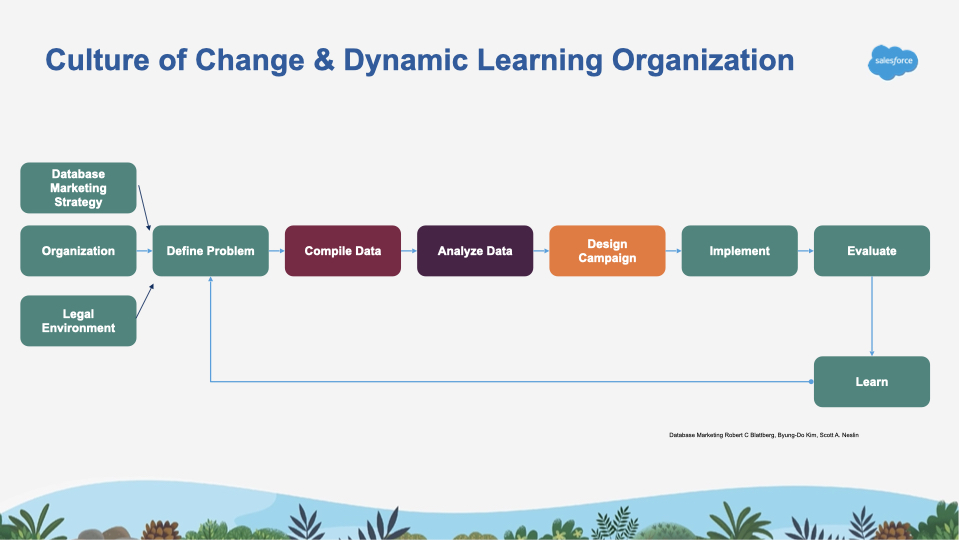
2. Account-Based Go-to-market Strategy and Process
In a standard marketing approach leads are collected from different channels (Paid, website opts, social channels, events, etc.) and then funneled into an engagement program such as Pardot. Campaigns create further engagement and filter the noise (cold or disqualified leads by engaging and evaluating – scoring). The remaining leads from the campaign are later passed to Sales as marketing qualified.
Named account, first party data, cookied visitor targeting is the principle of the sales and marketing targeting methodology.
In the Account-Based Marketing practice process, research is conducted to select which companies to sell to. This step usually involves data science and as a result, a list of companies is selected. Later, lead research is conducted for those companies and then they are targeted with engagement programs. Since prospects within the selected companies are considered unconvinced buyers marketing activity does not stop easily and continues with different prospects until the effort becomes more than the benefit. The biggest difference of Account-Based Marketing from standard lead-based marketing is the deliberate targeting of companies independent from the prospects (leads/contacts). Since the targeting is deliberate, engagement programs act as a warming up or prioritization vehicle rather than a lead eliminator funnel.
3. Production line (sales process) and KPIs
A controlled set of actions to focus effort in the right direction, analytics (KPIs as Six Sigma sales production)
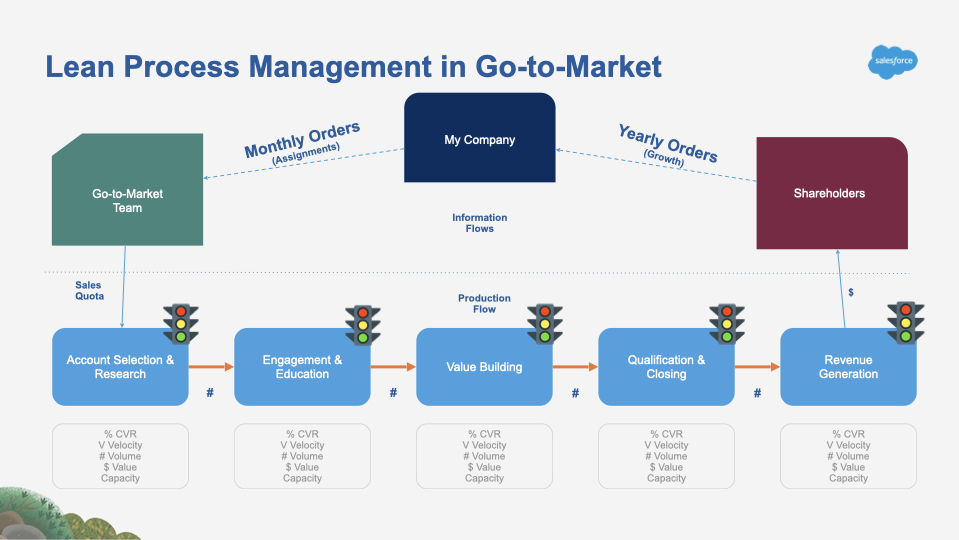
- Being able to generate comparable data on every opportunity, account, etc., lets you analyze, and establish optimizations. An additional benefit of the process is simplified enablement.
Leverage account and opportunity objects well enough for your sales process so that the entire production line operates with a traffic light system.
- All processes are in one single system, separate teams or departments do not use separate pieces. One single deployment dictates the company’s strategy to the entire org. Everybody in the organization is focusing on the same data and has the same objective – decisions are made at any level with maximum effectiveness and efficiency.
- The sales process becomes as simple process as hitting the next button to install software on a PC. Since the system dictates the next thing to do, reps focus on maximizing their engagement with the prospects which ultimately optimizes their time as well to make an impact.
- It is easier to hold every associate accountable.
4. Ability to Enable Semi-Autonomous Command & Control
Tactical reports, and dashboards provisions necessary information so that decisions are made at any point by anybody without the need for corporate hierarchies.
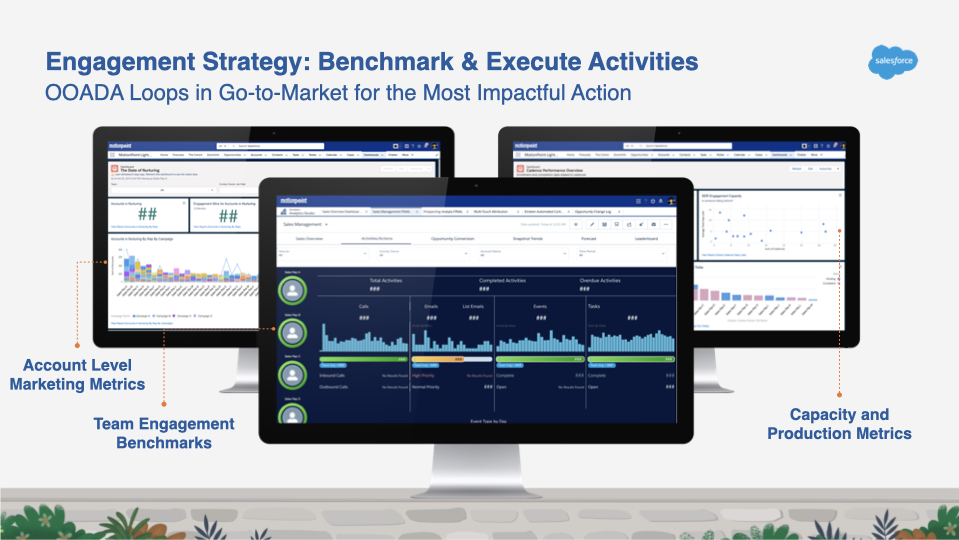
- The system enables a flat organizational structure and generates efficiencies using data and processes. Senior management does not become bottlenecks since the right decisions can be made at any level.
Display statistics on the point of decision maker so that every rep and marketer acts as a portfolio manager.
- Information is accessible to any individual, that’s why it is more effective.
- Since everything is reportable with ease, coaching becomes simple.
5. Investor/Growth Friendly Marketing Analytics
Activities > Events > Opportunities > Won Business; which enables easy forecast for growth maneuvers.
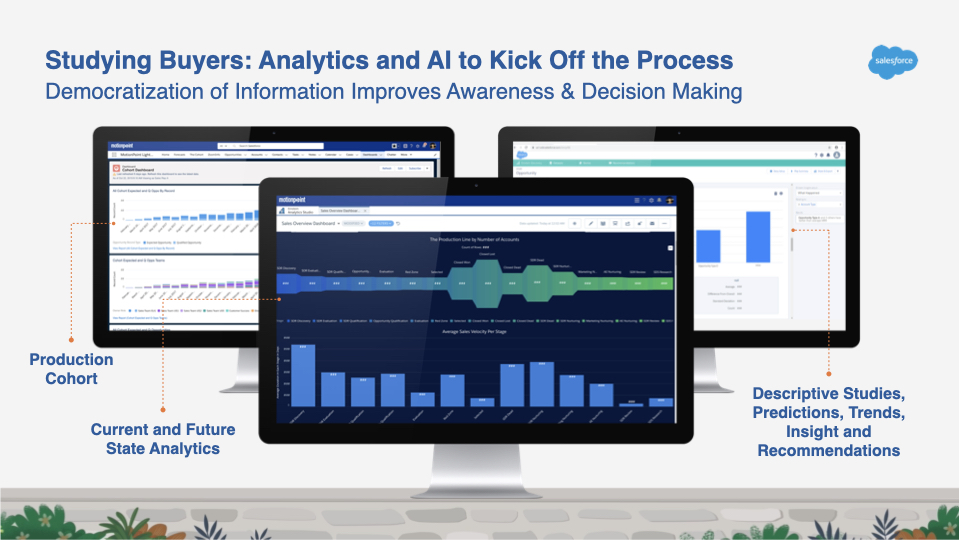
- Easy to make top to bottom strategy implementation – If senior management decides to execute a strategy, deployment changes the entire interaction with ease reaching the entire company
- Dynamic learning organism – AI, Analytics – Feedback loop, forecastable, predictable pipeline – As we learn we improve
- Transparency of information to enable strategy, maneuvers, and coaching
- Comparability for improvement – the ability to standardize data via uniform processes
Platform convergance accelerates strategy pivots.
6. Engagement Program – Controlled set of engagement touches
Keep your existing customers with higher customer satisfaction (communities) while maximizing revenue with efficiencies (service cloud, reporting/analytics/billing build on service cloud).
- Uniform information flow – Improve efficiency and effectiveness of synergy between Go To Market and Delivery
Grow within existing customers knowing available potential/customer saturation (salesforce sales cloud product books/opportunities, CPQ, etc.)
- Upsell/Cross-sell Automation (Market Basket)
- Marginal Pricing
- Efficient/Maximized Customer Lifetime Management
6 Reflection Points on the Use of CRM for Predictive Database Marketing
1. Create data requirements with field validation and 3rd party integrations
The utilization of a single uniform platform allows you to create coherent data without the necessity of ETL jobs.
Having enriched TAM in CRM and Customer 360 strategy creates the baseline.
In addition to that data integrity, a unified platform enables you to run statistics that lets you target correlated accounts. I have previously used 3rd party data syncs, field requirements, input validation, and other methods. Having the ability to manage applications, profiles, users, objects, record type, etc. (salesforce as a whole) allows yous to maintain high-quality information without being fully reliant on users or their time.
2. Engagement Based Targeting Entry for fit accounts:
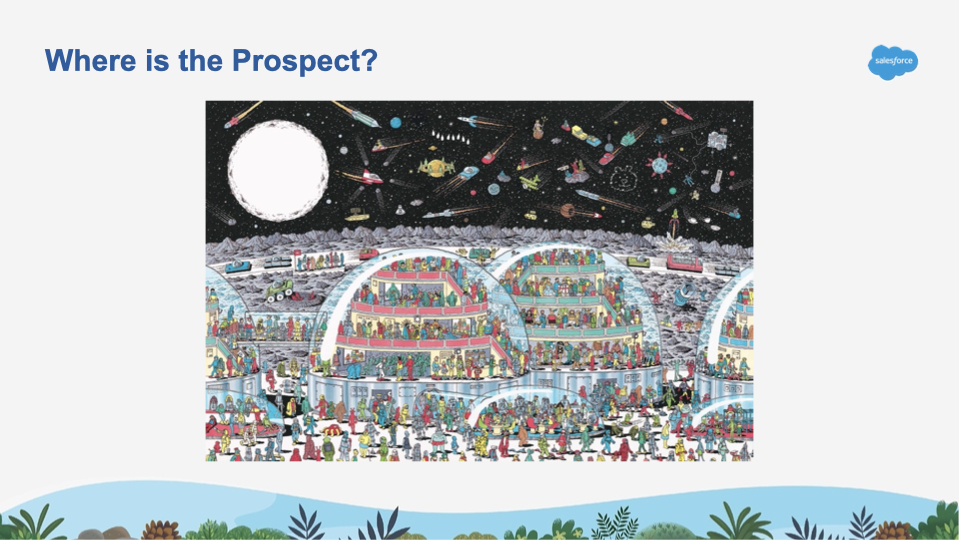
Use a mix of proprietary and third-party solutions to estimate the engagement level of accounts based on engagements with your website or other activity writing methods. Engagement is matched with account contact and opportunity records using a reverse IP-cookie based method that matches the visit or view. Engagement is calculated depending on a preset table. Have a process builder which listens for changes in engagement of accounts.
In B2B unit of process is accounts. Run your processes to be able to make account based decisions.
If accounts, go beyond a certain engagement score then the process builder checks the fitness of the account to determine whether it should be automatically distributed for account/contact research. After the contact research is completed the account is added to an engagement track. As engagement increases, automation assigns an account to an SDR.
3. Early and Late Stage Sales Process on Opportunity Object
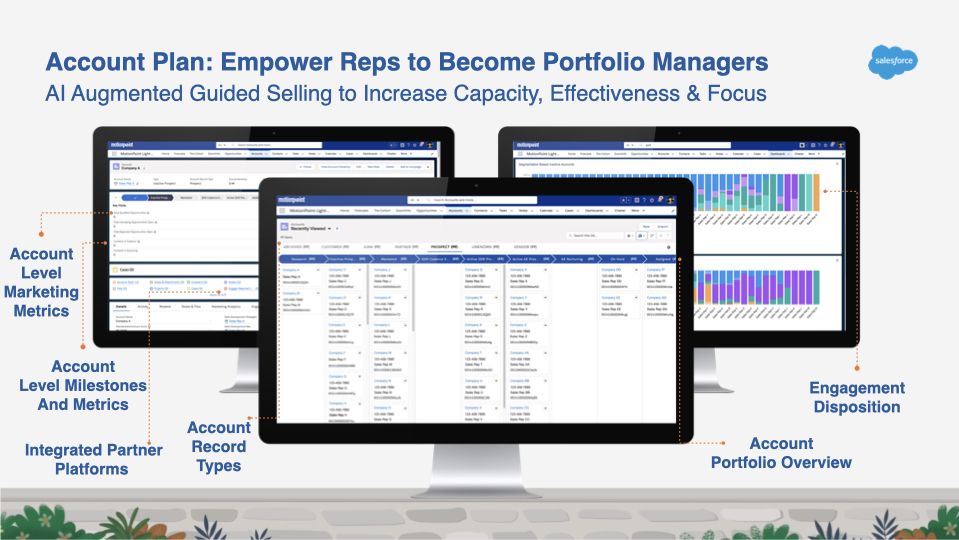
Configure Salesforce opportunity object in order to perfectly align your account-based targeting business model. The process kicks off when SDRs receive fit or correlated accounts with prospect record type and inactive type. They complete the account research and select which play they would like to utilize which adjusts the delivered message and applied communication. Then they identify from contact records which contact they are going to go after and add them to an “SDR Cadence/Sprint” track which kicks off a 2-3-week engagement program with delivery of different touchpoints such as emails, calls, social touches, etc. via tasks.
Milestones and underliend activity should change stages instead of reps manually adjusting them back and forward. Stages provide the feedback loop in to forecast estimations and prospecting scoring methodologies.
Page layouts adjust information to display relevant information to that specific point in time to be able to focus thoughts. Once the cadence begins, the process builder changes account stages to active-prospect to be able to provide a portfolio view to SDRs where they can see which accounts are waiting to be researched, which are actively engaged, which are marketing campaigned, etc. Cadence application automatically deploys the next steps based on the business logic to keep the account being worked. Every completed action is recorded by the system even to the point of call recording with semantic classifications. If the SDR is unable to book the appointment at the end of the cadence, then associated contacts are added to a Pardot engagement studio campaign. Enrollment to the engagement studio campaign adjusts a lot of fields on contact records which are later aggregated to the account to provide calculations on when the campaign will be completed. Simultaneously account type moves to be marketed. If SDR can complete milestone requirements for the contact at the Active account stage by booking an appointment with the decision-maker for a discovery call, then SDR creates an opportunity record with the expected opportunity record type. Once the expected opportunity is created the automation assigns opportunity team members (account executive, sales engineer, sales executive associate) based on previously set values.
In B2B unit of assignment is also acccounts with the goal of taking it from TAM and delivering to the pipeline.
From that point account team tries to conduct engagement. Process builder automatically deploys the next steps depending on the stage and milestones. As they can satisfy milestones per stage, opportunity stages move forward indicating progression on the opportunity. Every action sends a notification or/and makes a Chatter post to provide information. Once the opportunity is qualified, the record type converts to qualified opportunity to become eventually closed-won. If the opportunity dies, then separate processes are fired to disposition the opportunity and the account. Automations such as Flows, Process Builder, and macros support the effort to maximize productivity. A side benefit of the milestones, Path Object, Record types, and stages is that we are able to display the most relevant information.
Since in account-based approach everything is about the current and future state of the company right decisions are made at any point maximizing results.
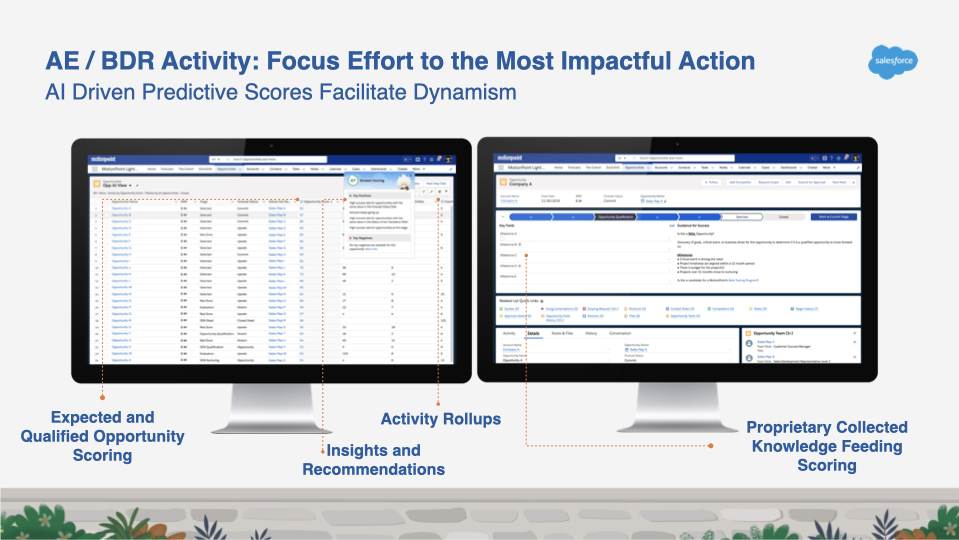
The path object above changes automatically depending on the engagement status of the account. A record type is used to identify prospect accounts and within them, Type dictates marketing disposition overview. The important factor to pay attention to is; that the system sets up the stages once the necessary fields are validated (filled). The ability to differentiate the marketing stage of accounts helps account executives to be able to manage a larger portfolio by knowing where they exactly are.
The sales process is followed by requiring field completion associated with sales milestones. Sales reps are engaging with prospects to be able to collect that information. The fields are associated with your milestones, marketing persona documents, and sales playbooks. Since the field validation secures stages, it is easier to justify a state or predict the outcome. Also guiding the salespeople provides on-the-job training. The location of those fields is the result of logical sales process-related selection as well as statistical optimization.
Collecting structured data also helps you to be able to create rich proletary datasets associated with accounts in our funnel or customers. Later, they can be used to infer different outcomes and optimize the targeting, entering the account’s characteristics, process, or engagement.
The benefits are three folded; optimized easy-to-follow process, coaching, and feedback loops.
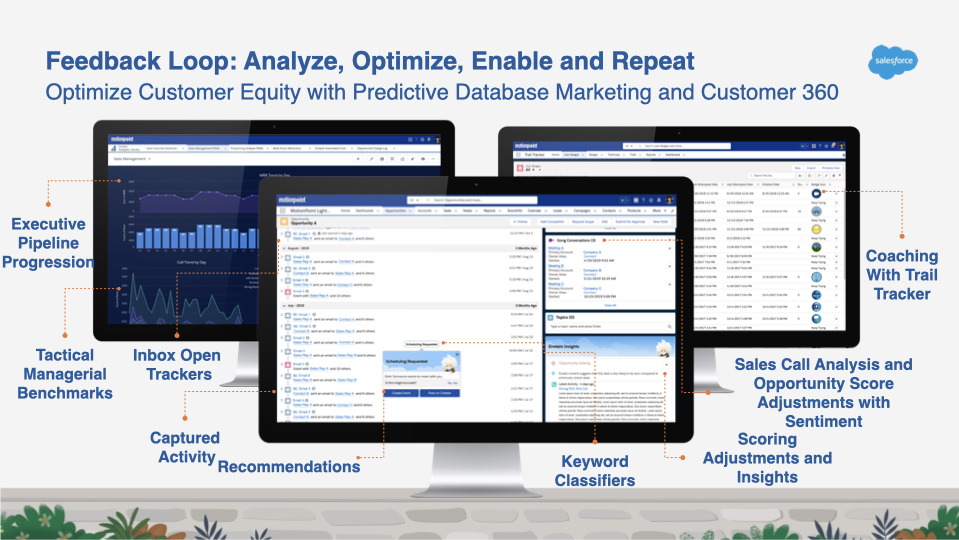
4. Marketing Automation – Cadence Handshakes
Use a managed package and a 3rd party platform to be rollup activities to a single account field. At SDR stage process builder places contacts into a cadence upon competition of marketing automation campaign and vice versa. A separate APEX functionality listens for the completion of cadence tasks and when contacts are not touched for a duration of time then campaigns being. If no engagement continues for a duration of time, then the account is redistributed.
The essence of all of these is that success comes from orchestrating relevant interactions that span multiple players in the account (decision-makers and influencers) across multiple channels (email, phone, social, in-person, and demand generation) delivered by all departments (Marketing, Sales Development, Sales, and Customer Success). When a business can achieve this, the results will always be greater than individual departments working in isolation.
5. Account Intelligence, Insights
Use different signals, triggers, intent, Einstein Insight, and call sentiment data to be able to maneuver your conversations or prioritize your engagement) and prioritization of opportunities (expected and qualified). An easy win-of-opportunity model is the utilization of Einstein Ai to prioritize opportunities to focus on the most impactful accounts and actions.
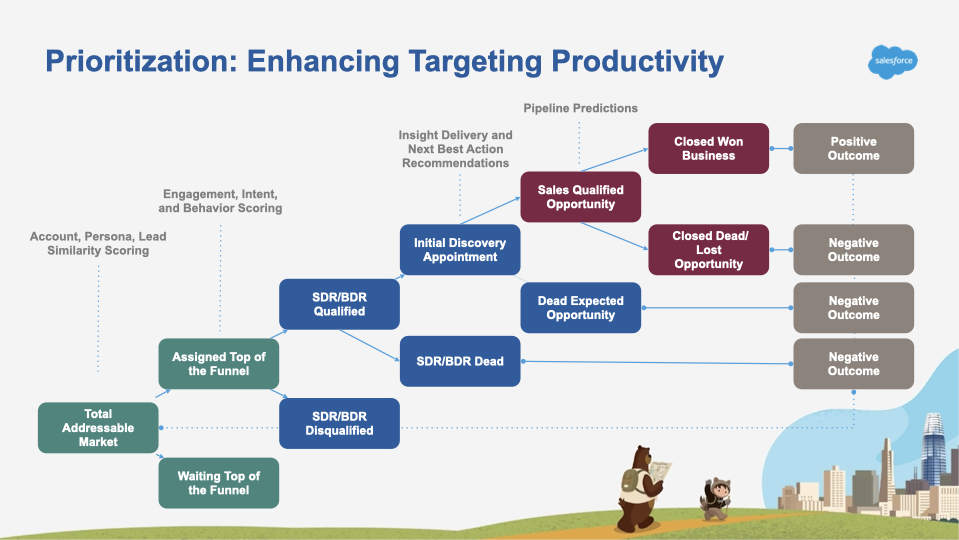
- Host total addressable market in our account objects (not segmented list of legal entities – let’s say the whole world)
- Overlay data from lots of publicly available, 3rd party, internal resources (which were later used in establishing correlations)
- Return success criteria to our customers and pipeline (weighted based on probabilities) account objects (CLTV, CVR, Revenue, health, etc.)
- Run statistics on which predictive variables maximize outcomes such as (velocity, CLTV, CVR, Revenue, etc.)
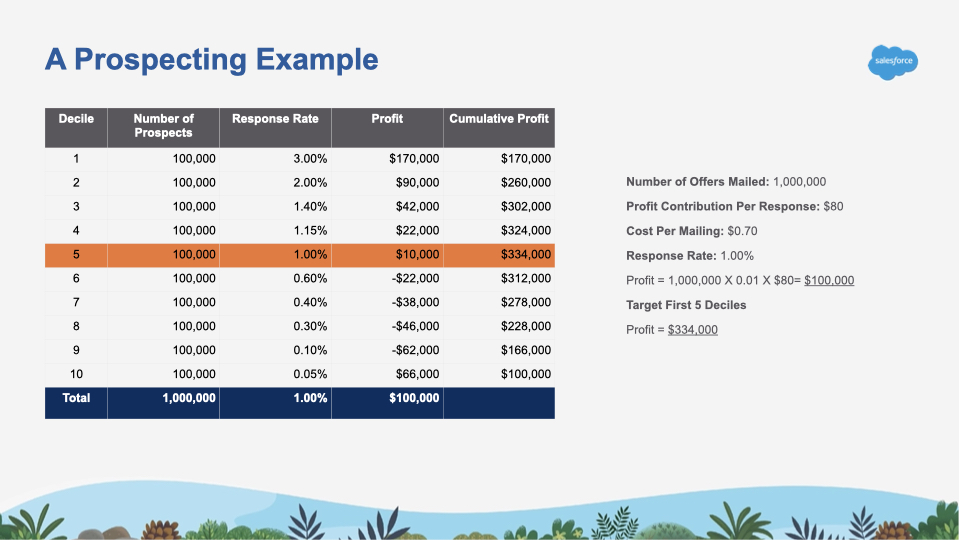
- Then based on those factors score the entire account objects to provide a batch of companies to target. In other words, marketing qualification is a highly correlated account.
- That selected target list is further researched by your reps to find persona-based contacts (contact objects) with a very selective process. Sales plays and campaign tracks are selected (moving to causality from correlations and creation of the target kill envelope).
- Then you introduce engagement (marketing campaigns, business development cadence tracks – like your high-velocity sales). Engagement responsiveness, linear funnel progression, and milestone accomplishment further weight and differentiate melons from the lemons.
As you set appointments with prospects, create early opportunities (since we expect a qualified opportunity because of our predictions/correlations). Then, an entire sales funnel is followed by opportunity objects. Record types, flows, path objects, profiles, etc. are used to make it a production line rather than a funnel where actions are deliberate and KPIs are evaluated. Opportunity scoring works like a charm. AI becomes even more interesting when it starts to recommend the next best action depending on historic success, classification, etc. Semantic study on calls or emails helps you to classify buyers’ intent and adjust your discussions accordingly.
Trigger information helps you to move deals accordingly. Triggers are classifying news that reflects the ongoing situation of the company such as changes in the executive team or a new acquisition. Those trigger information recommend reps to take action with tasks as well as make targeting decisions solely on some using salesforce automation.
6. Account Intelligence, Insights
Decide on cost of precision. In my experience being 100% precise in sales process is no different than taking every account in TAM one by one through the entire sales process. Since no one would waste their entire sales team to assess TAM decide first on what is the acceptable tolerance in early, mid and late funnel. After all the goal is to be reach a state where underlined AI methodology starts to generate incremental gains.

Application of the Growth Engine to Other Cases

Even though customization of the platform for the specific business use case is essential it can be deployed to almost any B2B company if customer equity estimates positive returns.
I like looking at the growth engine from the perspective of private equity where I invest in a new company at the seed stage. The general practice recommends one of the first steps as bringing C-staff to be able to establish necessary pieces of the business to be able to make the successful product grow and succeed. This parental advisory period usually structures the strategy and executes it depending on previous experience and best practices. I believe a major improvement to that practice would be deploying a uniform predictive database marketing system that makes the strategy executable and predictable with all the reasons I stated for our application. The maximum benefits are realized efficiently and effectively only if the strategy is executable with a real applicable method.

